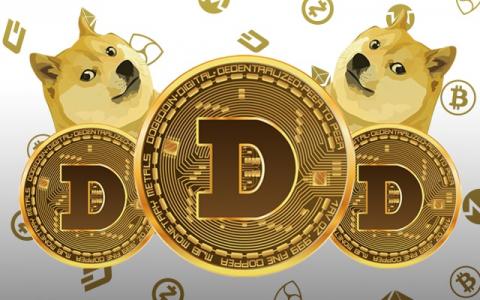
“Meme money” can be useful as a gauge of pure sentiment but “intrinsic value” is completely in the eye of the beholder.
We live in a world where a digital currency that started out as a computer science prank is worth $40 billion and fans still think it can triple in the near future.
In that scenario, dogecoin, named after a Shiba Inu dog popular on absurdist online memes, would have a notional market cap comparable to Amex or HSBC and significantly bigger than BlackRock.
With enough patience or leverage, the DOGE has already created its share of instant working-class millionaires. They gambled on a gag and fortune laughed with them.
But there’s a secret paper billionaire behind the scenes as well, with a rarefied set of investment priorities that probably doesn’t align with what retail DOGE holders want or need.
When you play with entirely imaginary assets, everybody’s equal. Once there’s real skin in the game, the house always wins in the long run.
Miners and Shovels
Back in 2013, people were cheering when it took an entire penny to buy 11 DOGE, so you can see the impact a trivial position from that level can make.
A $3,000 stake seven years ago would be worth $1 million on paper now. That’s a great outcome, a classic Las Vegas jackpot.
You throw money on an unlikely statistical outcome. Calculate the odds right and a little bit of luck turns into a big win.
We talked to Jeffrey Barrios, a 22-year-old guy who bought in three years ago on a romp when you could still get thousands of DOGE for $100. He didn’t look at it again until last year.
Now he’s up about 5,100% on paper and feeling great. We’ll talk more about his approach in future articles.
For your clients, the “romp” factor is the important one. Barrios isn’t living on his crypto account and he isn’t grinding out day trader income either.
He kept his day job. But he's loving the rollercoaster ride.
Of course, if mining activity remains steady, normal economic math guarantees 3.8% annualized inflation here. And of course, wider interest will motivate more miners, accelerating the deterioration in buying power.
That’s what DOGE was designed to do. It’s a mirror reflecting human nature and the worst aspects of fiat currency . . . not as a shield against central bank policy.
Unlike bitcoin, there’s no limit on the number of dogecoin that will eventually circulate. Set up your computer to generate them and you’ll earn about 1 DOGE every 15 minutes.
But find someone who covets that coin and you’ll be able to exchange it at market price. Right now, that’s about $0.30.
Unless human beings’ demand for a thrill expands faster than the built-in increase in supply, sooner or later these units will be worthless again.
The “value” of this currency is tied up in the hype around it. Human beings like hype. Call it FOMO or YOLO, there’s a seductive madness in getting caught up in viral behavior.
Mining The Dream
And managing the buzz is worth money. WSJ determined that someone owns 28% of all DOGE, which is roughly a $10 billion pool of paper wealth right now.
Keeping that paper wealth from turning back into meaningless numbers is worth a lot of money. That’s the real economic angle here.
Sooner or later, that DOGE hoard will be distributed across enough small accounts that the mystery whale will be able to cash out . . . or else the money will run out along the way.
Think of penny stocks that don’t amount to much more than a ticker symbol and a dream. Spend a few thousand dollars and you control that ticker.
You can write your own dream at that point, provided of course that you follow the regulations that keep the ticker symbol liquid.
Right now there are no rules on joke crypto. Anything can happen.
It sounds a lot like the art market, actually, which is probably where those non-fungible tokens (NFTs) or “crypto art” assets are headed.
Art only has value in the eye of the beholder. Anyone with a dream and the right skills can create new art out of the crudest raw materials.
We’ll talk more about these issues in the near future. There’s a lot going on here.
But today, I just want to dwell on one point. Art becomes an “investment” when the experts decide a given object has intrinsic value.
Until then, it’s just entertainment.
Normal investment assets stay ahead of inflation by expanding their intrinsic value over time. Corporations increase their cash flow. Governments collect revenue from an expanding tax base and their currencies reflect that.
We know all this already. But as an asset class completely decoupled from any kind of fundamentals, DOGE can theoretically measure and exploit human beings’ sense of fun.
People pay dollars for Disney rides and Netflix shows. Investors pay dollars for DIS and NFLX stock.
Do you invest your clients’ retirement assets in Disney memorabilia? Probably not. That’s what the stock is for.
DOGE and its cousins are similar. The coin is for fun, a chance to get into a trend ahead of the crowd.
The entities supporting that experience are where the action is. We’ll talk about them a lot more in the future too.
Whoever sells hope and a thrill to young investors has a good business going. The wealth management establishment may not want to be in that business.
But the clients of tomorrow do. That's the psychology that is going to shape this industry for a generation to come.



